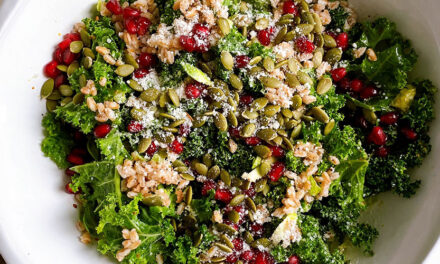Emotional eating is a behavior we’re taught to avoid or extinguish, but I’d argue that it’s actually a normal part of life. At times, food can be a celebration, a comfort, a way to unwind—not just a means to satisfy hunger. It isn’t until eating (or not eating) becomes the primary way of coping with stress or managing feelings that it truly becomes a problem.
Tank A or Tank B?
Sometimes, people aren’t even aware of the ways they are using food to cope with emotions and stressors. Consider the following metaphor: Imagine you have two tanks, Tank A holding food and physical nourishment and Tank B holding emotions, thoughts, and beliefs. These two tanks are completely separate from one another, and one tank cannot help to empty or fill the other. Still, our brains can begin to have trouble differentiating between Tank A and B, potentially leading to:
- Increased urges to eat when not physically hungry in order to self-soothe or cope
- Eating past a point of physical fullness to numb emotion
- Poor appetite, lack of interest in food, or unwillingness to eat when feeling so full of emotion or stress
What type of hunger am I experiencing?
In order to begin distinguishing between the two tanks again, try asking: “Am I experiencing physical or emotional hunger?”
Pinpointing Physical Hunger & Fullness
To help with identifying physical hunger, consider gauging hunger or fullness on a 1-10 scale (1 = ravenous and 10 = painfully full). Notice where in your body you feel hunger or fullness.
- At a 4 or below? Think about what tastes, textures, and temperatures sound good. Respond to the hunger cue by eating, staying present throughout the experience, and stopping at a point of fullness (around a 6 or 7 most of the time).
- If you’re at a 5 or above prior to eating, Tank B may be playing a role…
Leaning into Emotional Hunger & Fullness
If hunger or fullness signals are coming from Tank B, get curious about what’s happening. “What am I feeling? Am I lonely, tired, angry, excited, happy, bored, embarrassed, stressed, _________?” After naming the emotion, ask yourself, “What do I need?” and find emotional nourishment or a way to empty Tank B through self-care, support, distraction, or dealing directly with the emotion.
When Tank B is still driving the bus…
- Perhaps you still decide to eat in the absence of physical hunger or past the point of satisfaction. A helpful compromise can be committing to slow down, stay present, and consider “Is the food helping? How will I feel after eating this? How does the food taste?” Remain curious about your experience.
- Are you someone who loses your appetite in emotional or stressful times? When Tank B feels like it’s overflowing into Tank A, try sticking to a schedule with eating and planning meals and snacks you’ll be able to tolerate throughout the day.
French writer and philosopher Voltaire once said, “Nothing would be more tiresome than eating and drinking if God had not made them a pleasure as well as a necessity.” Food is meant to be more than fuel alone; It is meant to be savored and enjoyed! If all of your enjoyment is coming from food and you’re struggling to find fulfillment in other ways, or if nothing sounds good to eat because you’re too full of feelings, consider reaching out to Memphis Nutrition Group and a therapist or counselor who is trained to help with the untangling of Tank A and Tank B.
Blair Mize, MS, RDN, CSSD, LDN is co-owner of Memphis Nutrition Group, a nutrition & lifestyle counseling practice operated by registered & licensed dietitians/nutritionists. Memphis Nutrition Group believes in a non-diet approach that promotes overall health and optimal performance without compromising the enjoyment of food. For more information call Memphis Nutrition Group at 901.343.6146 or visit www.MemphisNutritionGroup.com.










